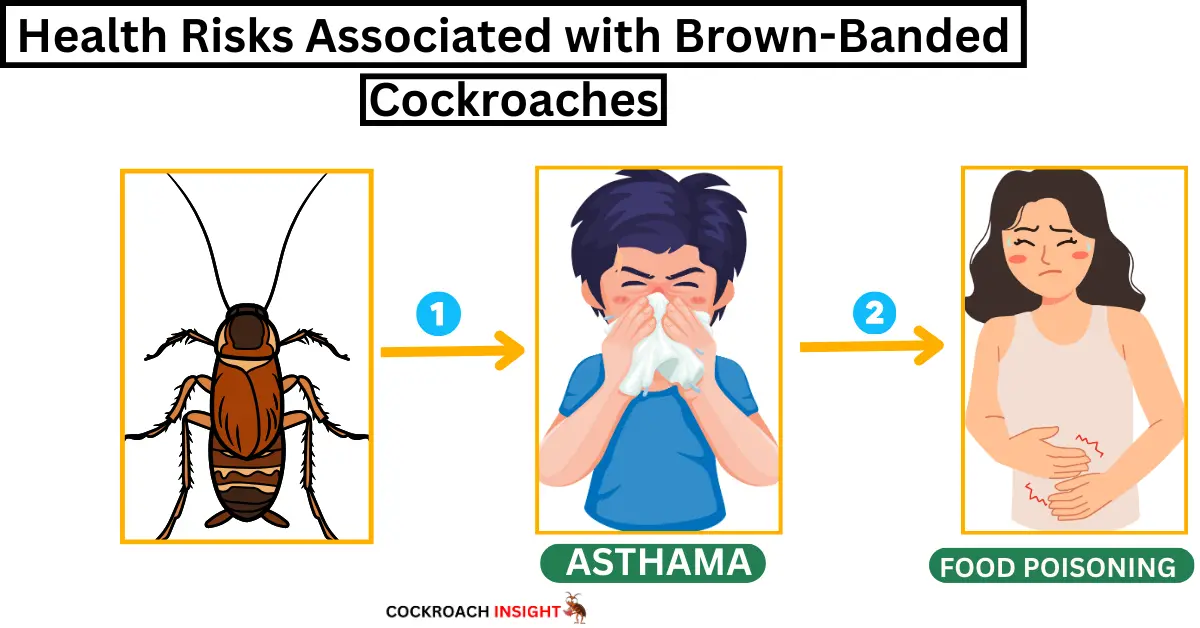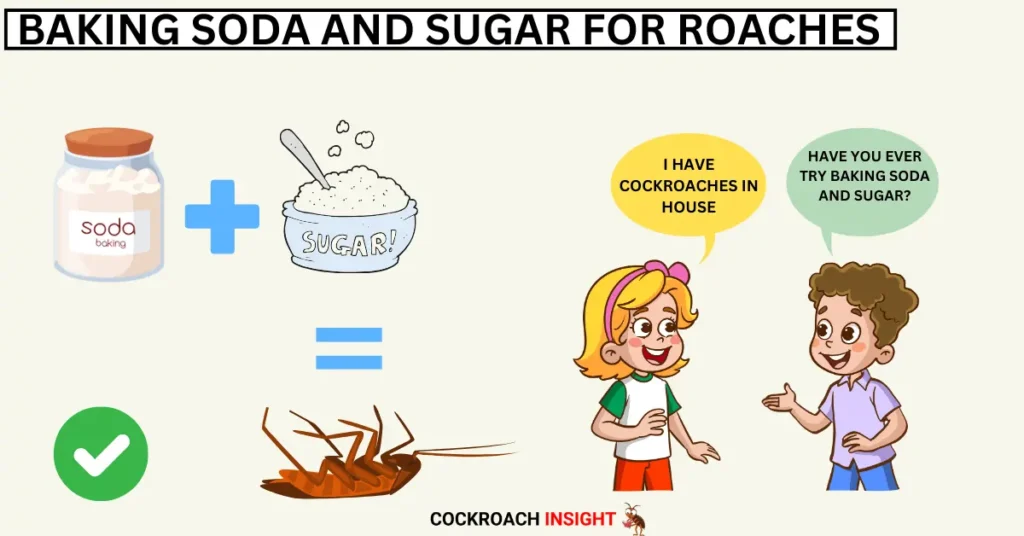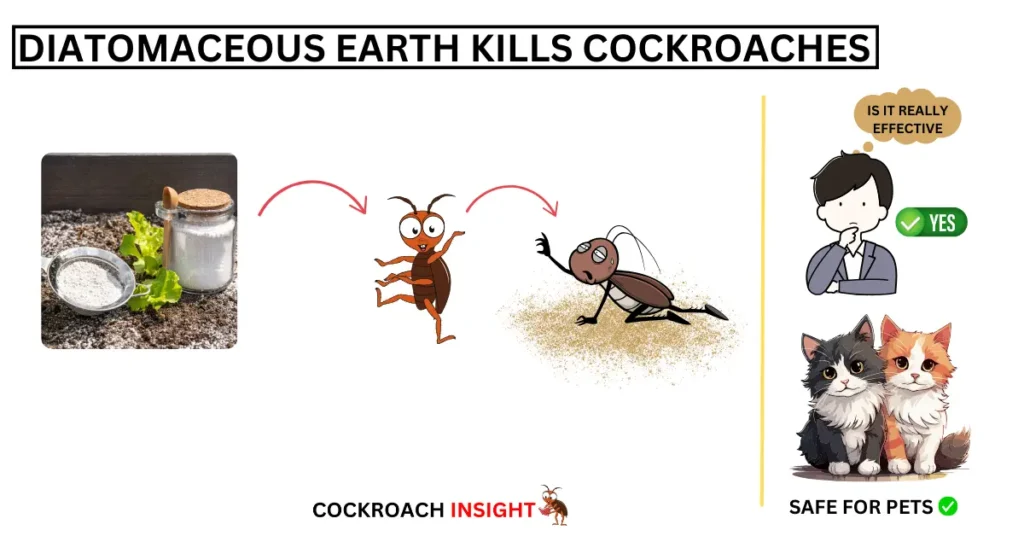One day, I noticed something disturbing: a brown-banded cockroach running across my kitchen floor. I had lived in my apartment for over a year without seeing any pests, which surprised me.
At first, I hoped it was just a one-time problem, but soon enough, more roaches started showing up in places I didn’t expect.
I knew I had to do something, so I started looking into how to get rid of brown-banded cockroaches for good. My goal wasn’t just to get them out but also to make sure they didn’t come back, all while keeping my family safe.
Through a mix of different methods and a lot of determination, I was able to get my home back under control.
In this guide, I’ll share my steps, what I learned, and the techniques that worked for me. Whether dealing with just a few roaches or a bigger infestation, this article will help you tackle brown-banded cockroaches and keep your home free of these pests.
Before you can effectively get rid of brown-banded cockroaches, it’s important to know what you’re dealing with. Brown-banded cockroaches are smaller than some other types of roaches, usually growing to about half an inch long.
They get their name from the light-colored bands that run across their wings and abdomen, making them look different from other cockroach species.
These cockroaches like warm, dry places and often hide in spots where you wouldn’t usually expect to find roaches, like on walls, ceilings, and inside furniture.
Unlike some other types of cockroaches, brown-banded cockroaches don’t need much moisture, so they can be found in a wider variety of places throughout your home.
Signs of infestation include seeing their droppings, which look like black pepper, scattered around your home or noticing their tiny egg cases left behind in hidden corners.
You might also find these pests hiding inside electronics or behind picture frames, which makes them particularly hard to find and get rid of.
Another clear sign is seeing them active during the day. Unlike other roaches that usually stay hidden until night, brown-banded cockroaches can be seen at any time, which might mean you have a big infestation.
If you notice these signs, it’s time to act quickly. For more insights into where cockroaches might be hiding, check out this guide on surprising hiding places for cockroaches.
Understanding the Behavior of Brown-Banded Cockroaches
To effectively get rid of brown-banded cockroaches, it’s important to understand their behavior. These cockroaches are known for being adaptable and preferring warm, dry places.
Unlike other species that thrive in kitchens and bathrooms, brown-banded cockroaches are often found in more unusual spots like bedrooms, living rooms, and even inside electronics.
One of the first things I noticed during my own case with these pests is that they hide in the most unexpected places. I found them hiding in the back of my TV stand and even inside a rarely-used bookshelf. Since this species doesn’t need much moisture, it can spread to any part of your home.
Their lifecycle is another important factor to consider. Brown-banded cockroaches reproduce quickly, with females laying about 14 egg capsules in their lifetime, each containing up to 18 eggs.
These eggs are often hidden in hard-to-reach areas, making it difficult to control their population once they’ve settled in. The young roaches, called nymphs, are particularly tough, and I found that regular sprays didn’t always work on them.
Interestingly, brown-banded cockroaches are less nocturnal than other species. While they prefer darkness, it’s not uncommon to see them scurrying around during the day, which is a strong sign of a bug infestation.
Understanding these behaviors is key to creating an effective plan to eliminate them. For more information on different cockroach species and how they compare, check out this article on the various species of cockroaches.
Health Risks Associated with Brown-Banded Cockroaches
When I first found brown-banded cockroaches in my home, I was immediately concerned about the potential health risks, especially since a family member has a lung condition.
These roaches are more than just an annoyance; they can carry and spread various bacteria and germs that may cause serious health problems.
They are also known to trigger allergies and asthma, especially in sensitive individuals. Their droppings, saliva, and shed skin contain allergens that can become airborne and worsen respiratory issues.
This was a big worry for me, especially considering how easily these tiny particles can be inhaled without even noticing.
Additionally, these cockroaches can contaminate food and surfaces with harmful bacteria like Salmonella, which can lead to food poisoning and other stomach issues.
Having cockroaches in any home is a warning sign of possible hygiene problems, but the fact that they often hide in places like bedrooms and living rooms makes them even more dangerous.
It’s also important to consider the psychological impact. Just seeing these pests can cause significant stress, especially if you’re worried about their effect on your health.
I remember how unsettling it was to see one of these roaches running across my kitchen counter, knowing the potential health risks they brought with them.
Given these risks, it’s crucial to act quickly if you suspect an infestation. For more information on the broader effects of cockroach infestations, you might find this article on what attracts cockroaches to your home helpful.
Advanced Prevention Strategies
After dealing with brown-banded cockroaches in my own home, I quickly realized that preventing them from coming back was just as important as getting rid of them in the first place.
Prevention starts with understanding their behavior and knowing how to make your home less appealing to these pests.
Sanitation and exclusion are your first lines of defense. Keeping your home clean, especially in areas where food is prepared and eaten, is crucial. Regularly wiping down surfaces, vacuuming up crumbs, and taking out the trash are simple yet effective ways to lower the risk of an infestation.
I found that even the smallest crumbs left behind in my kitchen could attract these roaches, so I made it a habit to clean up immediately after meals.
Sealing entry points is another important step. These cockroaches can enter through the tiniest cracks and crevices, so it’s important to carefully inspect your home and seal any gaps with caulk.
I discovered that these roaches were coming in through a small crack in my window frame, so I sealed it up and noticed a significant drop in sightings afterwards.
To take things a step further, consider habitat modification. This involves making changes to your home environment to make it less inviting to cockroaches.
For example, reducing clutter, especially in warm, dry areas like closets and storage spaces, can limit their hiding spots. I also started using advanced monitoring tools like sticky traps and pheromone traps to detect early signs of an infestation.
These traps not only helped me monitor the situation but also gave me peace of mind, knowing I was staying ahead of the problem.
For the importance of keeping certain areas clean and pest-free, especially where cockroaches might hide, you might want to check out this guide on how to keep electrical outlets roach-free.
Effective Treatment Methods
Chemical Treatments
 Chemical treatments can be especially effective when it comes to getting rid of brown-banded cockroaches, particularly for severe infestations. Gel baits, such as Advion and Combat, are designed to attract brown-banded cockroaches.
Chemical treatments can be especially effective when it comes to getting rid of brown-banded cockroaches, particularly for severe infestations. Gel baits, such as Advion and Combat, are designed to attract brown-banded cockroaches.
These baits work by luring the roaches to eat the poison, which they then carry back to their nests, spreading it throughout the colony.
Pro Tips: Placing these baits in strategic spots like under the kitchen sink and inside cabinets can lead to a noticeable drop in roach activity within a few days.
Insect Growth Regulators (IGRs) and Dusts
Using insect growth regulators (IGRs) in your treatment plan can help break the lifecycle of brown-banded cockroaches.
IGRs prevent roaches from growing into adults and reproducing, which is crucial for controlling the population, especially the young ones (nymphs).
Combining IGRs with dust like D-Fense Dust applied in hard-to-reach places, can be highly effective.
For those who prefer less harsh methods, non-chemical approaches can also be part of an effective strategy. Sticky traps are useful for monitoring and catching brown-banded cockroaches in suspected hiding spots.
Additionally, natural repellents like peppermint oil can help keep roaches away. While these methods may help in minor cases, they are generally more supportive rather than being primary solutions.
In my experience, natural remedies and sticky traps were helpful for monitoring and minor control, but they weren’t enough to tackle the entire infestation on their own.
Integrating Multiple Strategies
The key to successfully getting rid of these cockroaches often lies in combining multiple strategies. Using chemical and non-chemical methods allows you to attack the infestation from all angles, reducing the chances of the pests returning.
For more information on dealing with different roach species, this ultimate guide to keeping German roaches away might offer additional valuable tips.
Integrated Pest Management (IPM) for Brown-Banded Cockroaches
Preventive Measures
Integrated Pest Management (IPM) starts with prevention. Proper sanitation and exclusion are essential to keeping brown-banded cockroaches from becoming a problem.
Regularly clean your home, especially areas where food is prepared, and seal any cracks or gaps to prevent roaches from getting inside.
In my experience, maintaining a regular cleaning routine and quickly sealing any entry points were crucial in keeping these pests away.
Habitat Modification
Another important part of IPM is habitat modification. This means making changes to your home environment to make it less appealing to cockroaches.
Reduce clutter, especially in warm, dry areas like closets and storage rooms, to limit their hiding spots.
Monitoring tools like sticky traps and pheromone traps can detect early signs of a cockroach infestation, allowing you to take action before the problem gets worse.
Mechanical, Biological, and Cultural Controls
IPM also includes the use of mechanical, biological, and cultural controls. Mechanical controls involve traps and physical barriers to stop cockroaches from accessing certain areas.
Biological controls include introducing natural predators or using bacteria that specifically target cockroaches. Cultural controls refer to practices that change the environment, such as fixing leaks to eliminate water sources that cockroaches need to survive.
Combining Chemical Treatments
While IPM focuses on non-chemical methods, it also integrates targeted chemical treatments when necessary.
By using a combination of methods such as gels, IGRs, and dust, along with preventive and non-chemical approaches, you can create an effective strategy to manage these pest.
By applying these integrated methods, you not only eliminate current infestations but also reduce the likelihood of future problems.
For additional insights into managing cockroach infestations, consider reading this ultimate guide on keeping German roaches away, which shares useful strategies that can also be applied to brown-banded cockroaches.
Health and Safety Considerations
Safe Handling of Chemical Treatments
When dealing with these cockroaches, it’s essential to prioritize safety, especially if you’re using chemical treatments.
Always follow the manufacturer’s instructions on any product you use. Always wear protective gloves and make sure the area is well-ventilated during application, which can help reduce any health risks.
For those with respiratory conditions or pets, it’s crucial to keep them away from treated areas until the chemicals have dried or settled.
Minimizing Exposure Risks
These creatures are often infest areas that are accessible to family members and pets, such as kitchens and living rooms.
To minimize exposure risks, place baits and traps in locations that are hard for pets and children to reach, like behind appliances or inside cabinets.
This ensures that the treatment is effective while keeping your household safe from accidental exposure.
Eco-Friendly Alternatives
If you’re concerned about the environmental impact or the safety of using chemicals, consider eco-friendly alternatives. To discourage these cockroaches, use essential oils such as tea tree oil or peppermint.
While these methods may not be as effective as chemical treatments, they can be useful as part of a larger IPM plan. Using eco-friendly options helped me balance controlling the infestation and protecting my family’s health.
Long-Term Health Implications
Prolonged exposure to cockroach allergens can have significant health implications, especially for those with asthma or allergies.
Regularly cleaning areas where they are likely to roam, such as behind furniture and in corners, can help reduce the buildup of allergens.
Additionally, removing roach droppings and shedding skin promptly can prevent these allergens from becoming airborne and causing respiratory issues.
For more information on reducing health risks associated with cockroach infestations, this guide on how to keep electrical outlets roach-free is helpful, as it provides practical tips that can apply to various parts of your home.
While many cases of these cockroach infestations can be managed with DIY methods, there are situations where professional help becomes necessary.
Suppose you’ve tried multiple strategies, such as using baits, traps, and sealing entry points, but you continue to see these pests in your home. In that case, it may be time to consider calling a professional exterminator.
Persistent infestations often indicate a more extensive problem than what’s visible, possibly involving hidden nests or even neighboring units in apartment buildings.
Professional pest control services bring the expertise and specialized tools needed to handle severe infestations effectively.
Exterminators can locate the source of the infestation, analyze its severity, and implement specialized treatments that are more potent and successful than over-the-counter remedies.
They also provide follow-up visits to ensure the problem is fully resolved, preventing the roaches from returning.
FAQs Section
How to Get Rid of a Brown-Banded Cockroach?
To get rid of a brown-banded cockroach, start by cleaning your home thoroughly, focusing on areas where food is prepared and stored.
Use gel baits and insect growth regulators (IGRs) to target the roaches and seal any cracks or entry points to prevent them from getting inside.
Regular monitoring with sticky traps can help you track the infestation and adjust your strategy as needed.
What Do Brown-Banded Cockroaches Hate?
Brown-banded cockroaches dislike cleanliness and environments where they can’t easily access food and water. Keeping your home clean, especially in areas where food is stored, can make it less attractive to these pests.
They are also repelled by certain natural scents like peppermint oil, which can be used in areas where they are commonly found.
What is the Best Bait for Brown-Banded Roaches?
Gel baits, such as Advion and Combat, are some of the best options for controlling brown-banded cockroaches. These baits are designed to attract the roaches and contain insecticides that they carry back to their nests, effectively eliminating the colony.
What is the Hardest Cockroach to Get Rid Of?
While brown-banded cockroaches can be tough to eliminate due to their versatility and a wide choice of hiding places, the
German cockroach is widely regarded as the most difficult to eradicate. They reproduce quickly and are highly resistant to many common treatments, requiring a comprehensive and persistent approach.
Do Brown-Banded Roaches Jump?
No, brown-banded cockroaches do not jump. However, they are very agile and can move quickly across walls and ceilings.
Conclusion
Dealing with brown-banded cockroaches can be a challenging task, but with the right strategies, it’s entirely possible to eliminate them and prevent future infestations.
The key is to approach the problem with a combination of preventive measures, effective treatments, and ongoing monitoring.
From understanding their behavior to implementing Integrated Pest Management (IPM) techniques, each step plays a crucial role in keeping your home cockroach-free.
Remember, persistence is vital. Whether you’re using chemical treatments, natural remedies, or seeking professional help, the goal is not just to get rid of the cockroaches you see but to ensure that they don’t return.
By following the strategies outlined in this guide, you can protect your home from these pests and enjoy a cleaner, healthier living environment.
If you still need to figure out how to tackle a severe infestation or if your efforts aren’t yielding results, feel free to consult a professional. Their expertise can provide the thorough treatment needed to fully resolve the issue.
For more tips and resources on managing pest infestations, explore our other guides, such as the ultimate guide on keeping German roaches away and how to keep electrical outlets roach-free.








